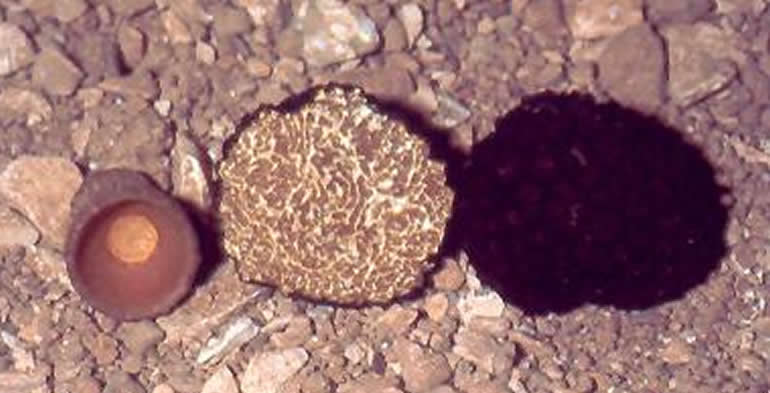-
Summer Truffle or "Scorzone" (Tuber aestivum vitt.)

Organoleptic features: the name of the summer truffle or "scorzone" is derived from the particularly thick and cork-like outer skin (or peridium) with raised warts, that testifies to the warm period in which this fungus ripens. It can be quite large and emanates a typical 'fungal' perfume, which is delicate but pleasant. The immature sporocarps, collected improperly without the use of a dog, have a light-colored flesh and no perfume. Due to its modest commercial value and the period of harvest that usually runs from June to August, it can maximize the gastronomical offerings of tourist and farm holiday accommodation structures, easily conquering the palates of children and foreign visitors.
Symbiotic arboreal species: this fungus establishes symbioses with various arboreal species. In woods it is more frequently associated with downy oak and holm oak, and can also be quite commonly found in patches of Black Pine, either pure or mixed with Turkey oak. In the large parks which surround valuable old residences "scorzone" is mainly produced in symbiosis with the holm oak.
Adjuvant shrubs:A number of species of shrubs accompany the truffle-growing arboreal plants. Some of these like laurel, viburnum, and boxwood, seem to be more linked to parks or "Ragnaia" woods where the symbiotic holm oaks produce other species such as privet, probably demonstrating the good levels of limestone in the soil.
